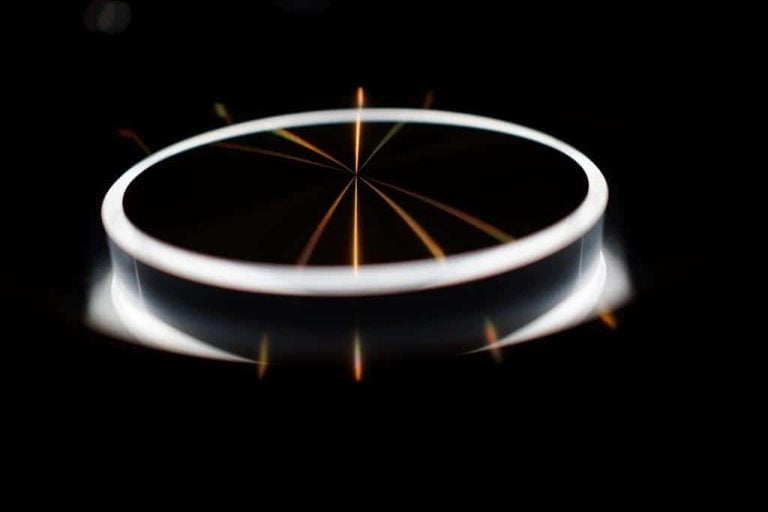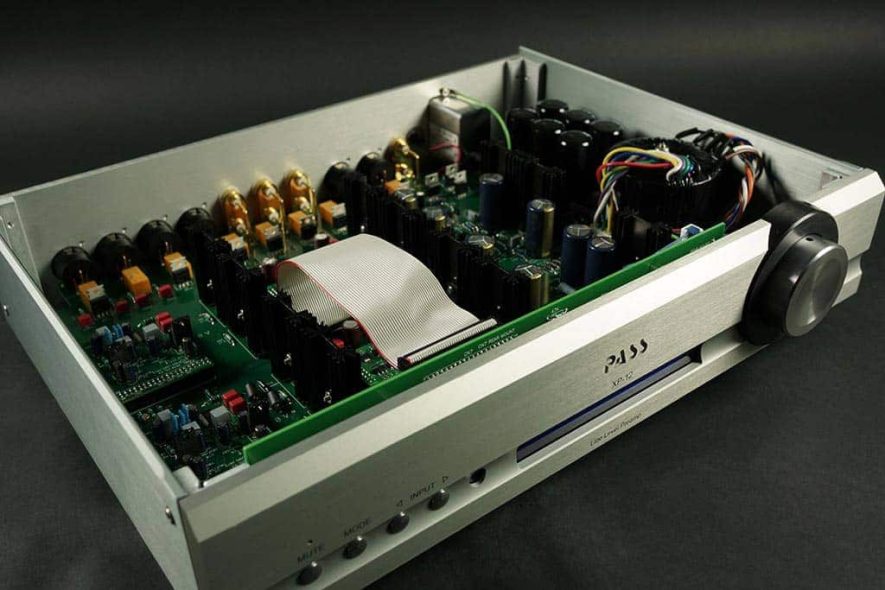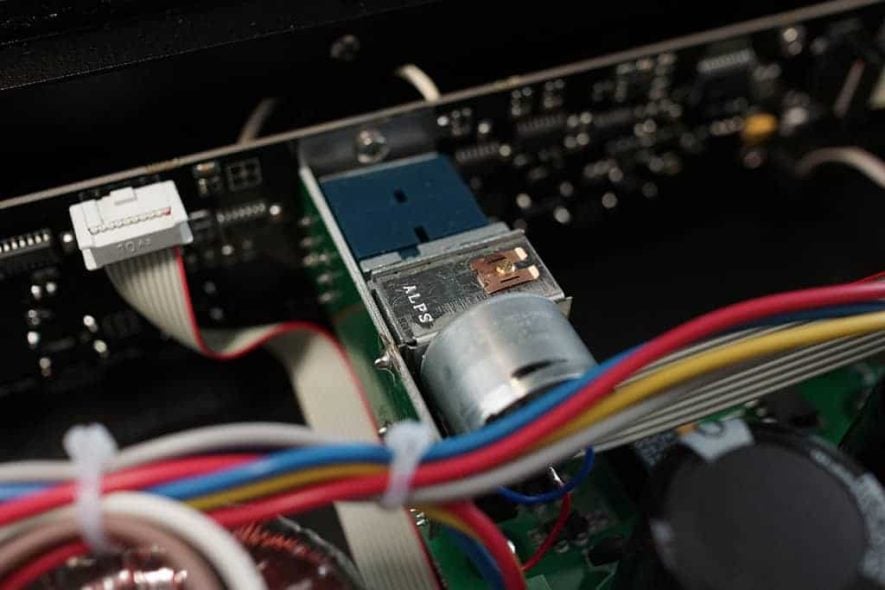

We’ve talked about the various types of amplifiers, how many watts you need and what technology can be used to amplify. But what about the preamplifier? Let’s look at that in this last episode of the Alpha Academy Series on amplifiers!
If we look very dryly at a classic preamplifier, it is nothing more than a switch between inputs with an attenuator in the signal path.
So a preamplifier allows us to choose between various sources – connected to an input of the preamplifier – and we can then attenuate the voltage, so that we do not send signal at line level through the output to the power amplifier. This is important because that would amplify the (say) 2 volts with (say) 30dB gain. That is undesirable in almost all cases. So we want to be able to control that output voltage in order to control the volume of the system.
Selecting inputs

Let’s look at the first function of a preamplifier – also called a pre-amp. Switching inputs is obviously necessary for people who have more than one source. If someone wants to easily switch between a CD player and a streamer or TV, it’s nicer to push a button, rather than switch a cable.
We see these days that a preamplifier incorporates more than just analog inputs. Many times it also incorporates a d/a converter (digital to analog converter). That makes it possible to connect digital sources as well. And that does come in handy, considering the number of digital sources. In fact, we estimate that most users have more digital than analog sources.
However, it is important to pay close attention to the types of connections. There are preamplifiers that offer both single ended (rca) and balanced connections for analog sources. A balanced connection – also known as XLR – offers the advantage that noise and distortion are greatly reduced, because it is a symmetrical circuit with a kind of “error correction” built in. We explain this again in another article.

Now, unfortunately not all balanced in- and outputs are equal. Some produces offer them, but these connections are not really balanced. This happens not only with preamplifiers, but with all audio devices. Developing a completely symmetrical device is expensive. This is because it requires twice as many components as a single ended device. After all: a second circuit is put in parallel (out of phase) (hence the name symmetrical/balanced). This, of course, costs money.
However, by using an op-amp (operational amplifier) that reverses the signal, a manufacturer can offer balanced connections without putting an identical circuit in parallel. Clever: but of course it is not truly balanced. And so it doesn’t offer the benefits of a balanced setup either. This happens especially with relatively inexpensive devices.
Volume control

Then some stuff about volumes controls. It sounds like something simple, but it is not. In fact, volume control is the part that poses the biggest challenge for developers.
The reason is that almost every volume control gives coloration. Or other problems. Consider the “good old” potentiometer. It is not linear and often gives problems at very soft volumes. Then, for example, the stereo image can pull to the left or right. You undoubtedly know this from older devices.
There are also volume controls that work with switchable resistors. The “ladder. That works well and linear, but the steps are often a bit coarse, unless a manufacturer uses very many resistors. Say: 100. Such a volume control gets very pricey pretty quickly.
Then there are digital volume controls. This is still a bit “Wild West,” as there are many variants. From very good, to very bad.
Basically, a digital volume control just throws away bits. But some versions do this more cleverly than others. For example, there are variants that first upsample to 24 or better: 32 bits. Once upsampled, the bits are discarded to adjust the volume: that’s already much better. But at very low volumes there is still loss of refinement and dynamics.
There are also hybrid versions of these above methods. Think of Ayre that does not adjust the volume in a preamp, but controls the gain of the power amp (in their integrated models). This is actually smarter, because that way the noise floor does not vary. After all, the softer the volume, the higher – relatively – the noise floor is. That problem is gone if the “preamp” is always fully open, but the gain of the power amp is adjusted.
With ‘digital’ controls, Sonnet and Metrum have pulled off a clever trick. Metrum and Sonnet control the reference voltage of the dac chip. This is 100% lossless. The only drawback to this method is that it cannot play at very low levels. In some cases this is not convenient. Think with high-efficiency speakers, or power amplifiers with high gain. There are solutions for that, but it is something to consider.
Matching
So a preamplifier – especially by the way of volume control – is a tastemaker. Every device in a audio-chain adds coloration. That makes it very important to match well!
We believe that the preamplifier “colors” more than the power amplifier, so it is very important to choose a good, matching, preamplifier. Should you still need one, because the need is actually no longer there. Most (high-quality) dacs or streamers have a – good – lossless volume control, making a preamplifier unnecessary. Unless, of course, you have multiple, analog sources. In that case, you cannot escape a preamplifier.
Rounding up
It’s a nifty little device, that preamplifier. And as you read, it involves more than a switch and a potentiometer. Designing a good volume control isn’t easy. And there are differences in balanced connectors. Unfortunately, because you can’t see that from the ouside.
We hope you found this series interesting. If you have requests to cover another product category (or topic): feel free to contact us!





Could you also please describe the mechanics of various Balance Controls? Which ones least affect SQ?
You mean bass, mids and treble?
L-R channel balance.
Ah… Well.. it is a resistor as well. It just lowers the voltage of one channel.